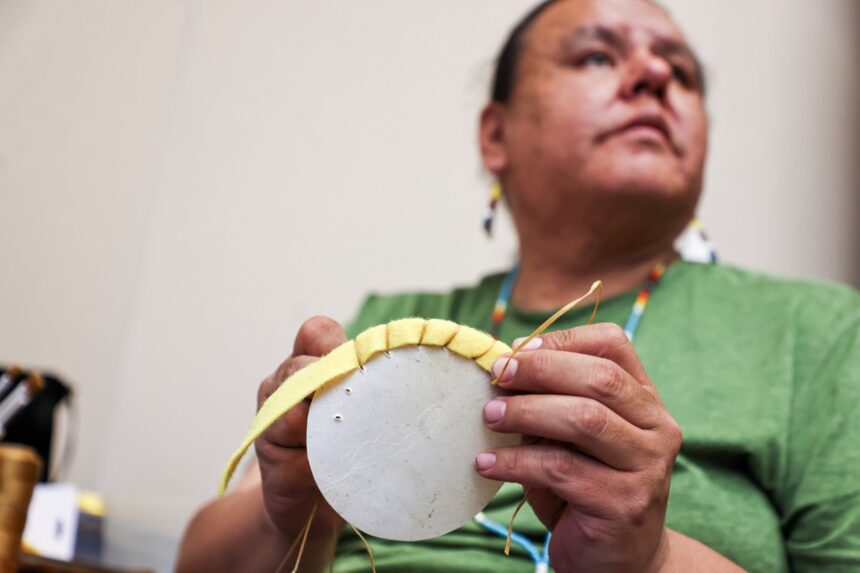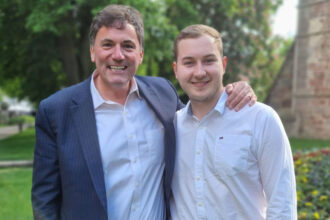The ancient art of parfleche-making came alive last weekend in Canmore as community members gathered for an immersive Indigenous cultural workshop that bridged generations and traditions. The event, hosted at artsPlace, offered participants a rare opportunity to connect with Indigenous crafting techniques that have sustained communities for centuries.
Under the guidance of Stoney Nakoda artist Travis Rider, attendees bent over tables adorned with vibrant leathers and traditional tools, their fingers working methodically to create parfleches—rawhide containers historically used by Plains Indigenous peoples to store food, clothing, and personal items.
“These aren’t just containers,” explained Rider as he demonstrated precise folding techniques. “They represent our people’s ingenuity and relationship with the land. Each parfleche carries stories of survival and adaptation that have sustained us through challenging times.”
The workshop attracted a diverse group of participants, from curious first-timers to those with deeper connections to Indigenous heritage. Many expressed appreciation for the opportunity to engage with Indigenous cultural practices beyond theoretical learning.
“There’s something profoundly different about understanding a culture through actually creating something with your hands,” said Canmore resident Melissa Harrington. “I’ve read about parfleches before, but physically making one gives me a deeper appreciation for the skill and knowledge involved.”
The event forms part of artsPlace’s broader commitment to meaningful reconciliation through cultural education. Program director Samantha Johnson emphasized the importance of creating spaces where Indigenous knowledge can be shared authentically.
“These workshops provide more than just a creative outlet,” Johnson noted. “They create an environment where cultural exchange happens naturally, where questions can be asked respectfully, and where we can all deepen our understanding of the first peoples of this land.”
For the Stoney Nakoda Nation, whose traditional territories include the Bow Valley region surrounding Canmore, such workshops represent vital opportunities to ensure traditional knowledge continues to thrive in contemporary contexts.
Throughout the day, Rider shared stories that contextualized the practical techniques, explaining how parfleche designs often contained geographical information and family histories. Participants learned how weather conditions affected the preparation of rawhide and how natural pigments were created for decoration.
Local educators attending the workshop expressed enthusiasm about incorporating these experiences into their classroom teaching. Bow Valley High School teacher Daniel Morrison plans to integrate parfleche-making into his social studies curriculum.
“This isn’t just about arts and crafts,” Morrison said. “It’s about understanding sophisticated knowledge systems that have existed on this land for thousands of years. My students need to see Indigenous knowledge as living and relevant, not as historical artifacts.”
As Canada continues its complex journey toward reconciliation, cultural workshops like these serve as tangible steps toward mutual understanding. Rather than treating Indigenous culture as a monolithic subject to be studied abstractly, such hands-on experiences invite participants to engage with specific traditions in respectful, meaningful ways.
As the workshop concluded, participants proudly displayed their completed parfleches—each unique in design yet connected by shared learning. The room hummed with conversation as people exchanged contact information and discussed future cultural events.
What remains to be seen is how communities like Canmore will continue building on these cultural bridges beyond individual workshops. Can these moments of connection evolve into sustained relationships that acknowledge both historical truths and shared futures?










